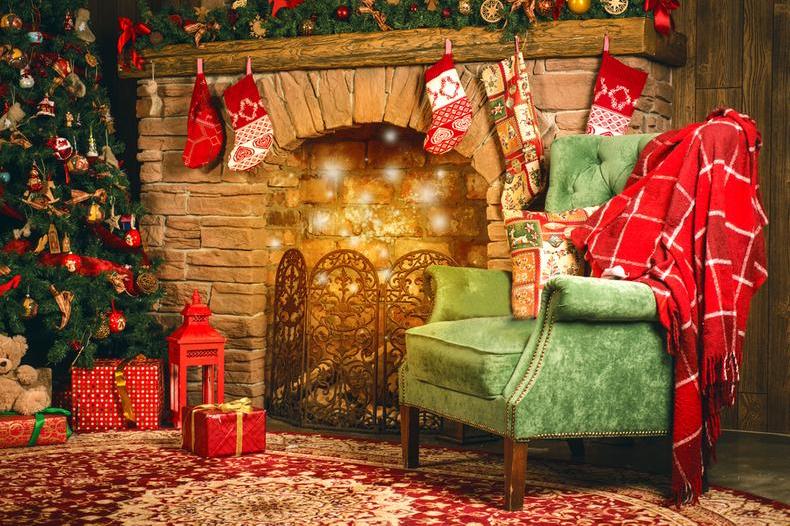Festive trade marks
The annual festival of Christmas is a cultural and religious celebration observed by billions all over the world.

Customs of gift giving, advent calendars, Christmas music, holiday decorations, Christmas trees and the fame of the characters of St Nicholas or Father Christmas has seen festive phrases and figures pass into common language and culture.
Christmas has become not only a cultural phenomenon but also a commercial one, and you might presume that well-loved Christmas phrases, imagery and characters would be unlikely to be perceived as indicators of trade origin and thus would not qualify for trade mark protection.
However, as this article explores, this has not stopped businesses and individuals from seeking, and in some instances succeeding, in securing trade mark rights.
The most recent instance of an individual or entity seeking exclusive rights to a slice of Christmas by way of trade mark protection concerns Mariah Carey, whose perennial holiday hit “all I want for Christmas is you” has seen her lauded as the “Queen of Christmas” - a title she sought to register as a trade mark in the US.
Interestingly, the application was not refused on examination by the US PTO (perhaps the examiner was a fan!) but was successfully opposed by Elizabeth Chan (also a singer) who criticised Mariah Carey for trying to monetise Christmas.
While Mariah Carey didn’t succeed in claiming her crown as the Queen of Christmas, some Christmas marks have secured registered trade mark protection:
Santa Claus
Besides Mariah Carey, Santa Claus is one of the most legendary icons of Christmas. Originating from the traditions associated with St Nicholas, the modern Santa Claus is commonly depicted as a jolly (slightly portly) white-bearded man who delivers gifts to children on Christmas Eve (depending on whether they have been “naughty or nice” that year) aided by his flying reindeer.
As these stories of St Nicholas / Santa Claus stretch back to as early as the third century, it is interesting to note that Unilever Canada Inc. has secured a registered trade mark for “Santa Claus” in Canada in respect of soap of all kinds since February 1901.
Although, interestingly, a review of the UK Register indicates that prior marks for Santa Claus registered for all manner of goods, in particular cakes and biscuits and beer, have all - despite initially being accepted - subsequently been declared invalid.
Rudolph the Red-Nosed Reindeer
Another beloved figure of Christmas folklore is Robert L. May’s character, Rudolph the Red-Nosed Reindeer.

Rudolph is depicted as the youngest of Santa Claus’s reindeer, who uses his illuminating red nose to guide the herd of reindeers pulling Santa’s sleigh in a harsh winter storm.
St. Nicholas Music Inc. owns the copyright to the classic Christmas song written by the late Johnny Marks: “RUDOLPH THE RED-NOSED REINDEER”.
They have also secured various UK trade mark registrations for ‘RUDOLPH THE RED-NOSED REINDEER’ in classes 9 (computer software and audio cassettes, gramophone records) 16 (printed matter) 25 (various items of clothing) 28 (toys, games and Christmas tree decorations) 30 (confectionery) and 41 (Production, distribution, exhibition and performance of live and recorded entertainment) as well as registered rights in the US and EU.
Christmas Wreath
Christmas wreaths are a common emblem of Christmas. In October 1999, Yankee Candle Company, Inc registered “CHRISTMAS WREATH” in the US for candles, and candles and fragrant wax for use in potpourri burners.
While the mark remains valid on the register, our searches suggest that the Christmas Wreath fragrance has been discontinued - much to the apparent upset of Yankee Candle lovers.
Merry Christmas Ya Filthy Animal
Merry Christmas, the ubiquitous seasonal greeting, does not appear to have been successfully registered in solus.
However, the quote “Merry Christmas Ya Filthy Animal”, famously used in the movie Home Alone 2, is a registered trade mark in the US for games, playthings and Christmas tree ornaments and decorations.
The specimen of use filed at the US PTO indicates that the mark is in use by the humorous tree ornament company Tree Buddees (which you can purchase on amazon if this is the Christmas decoration your tree is missing!)
The Grinch
The Grinch is a fictional character created by Theodor Seuss Geisel (‘Dr. Seuss’).

Although the Grinch’s first appearance was in a non-Christmas related story, The Hoobub and The Grinch, the Grinch later became the protagonist of Dr Seuss’s children’s book of How the Grinch Stole Christmas!
Whilst the trade marks secured in this instance are not surprising and arguably legitimately filed to protect the character, the Grinch – notwithstanding its characterisation as an unpleasant and green coloured cynic - has become a well-loved symbol of the festive season.
Dr Seuss Enterprises will need to carefully control the use of the name to ensure that references to GRINCH / THE GRINCH continue to be understood by the relevant public as originating from Dr Seuss and don’t fall into the common vernacular.
The Twelve Days of Christmas
Perhaps most famously known as an English Christmas carol, “TWELVE DAYS OF CHRISTMAS / 12 DAYS OF CHRISTMAS” is a valid UK trade mark held by Gambling Commission The mark is registered for games and lottery services in Class 28.
Thoughts on Christmas marks
A trade mark operates as a sign to distinguish one entity’s goods and services from another, and grants the owner exclusive rights to prevent others from using it (subject to circumstances).
For this reason marks that are (i) devoid of distinctive character (consumers would not understand them to indicate the origin of the goods) or (ii) descriptive of the goods and / or services, and/or has become customary in the trade, will not be accepted for registration.
Marks will also be refused if they are deceptive, or contrary to public policy / morality, but those provisions

as less likely to apply to festive marks.
However, it is possible to overcome a refusal if the mark in question can be shown to have acquired a distinctive character in relation to the goods/services applied for as a result of the use which has been made of it, and therefore functions as a trade mark / indication of origin.
If the mark is accepted for registration, like the examples above, whilst the marks have a presumption of validity, it is still possible for third parties to challenge the validity of a registered mark on the basis that it does not operate as a trade mark (i.e. it is descriptive / common in the trade or lacks distinctive character) or has not been used as a brand identifier.
Some of the marks identified started out as unique creations and have subsequently been adopted as well loved icons of Christmas.
Whilst this demonstrates the success of these brands and characters, the owners will need to robustly and perhaps creatively enforce their rights to ensure that they continue to function as trade marks and do not fall into the common parlance of Christmas folklore, making them vulnerable to invalidation.
In respect of the other marks identified that concern more ubiquitous references to Christmas customs and characters, registration affords the owner of the trade mark the right to object to the use of an identical or similar sign, in the course of trade, in connection with goods or services that are identical or similar to those for which the mark is registered.
Trade marks which also enjoy a reputation may also be able to prevent the use of the mark for dissimilar goods and services.
The scope of these kinds of right (i.e. referencing or using phrases, greetings or names of characters which are in common usage at Christmas) is therefore actually rather limited, as they must be used “in the course of trade” and as a commercial identifier for the specified goods and services.
Private use or use absent of any brand significance would not amount to infringement.


